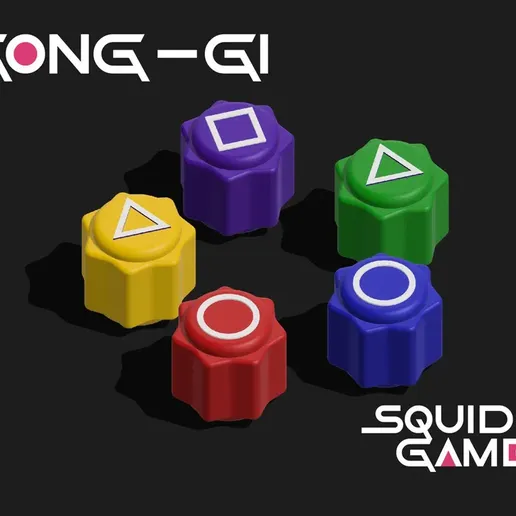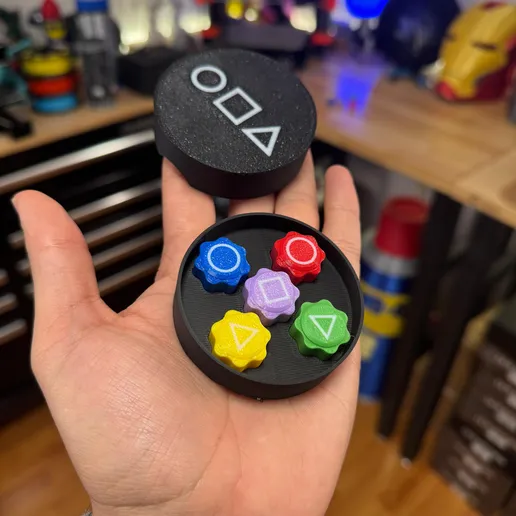Gonggi Game - How to 3D Print and Play
Season Two of the popular Netflix show Squid Game recently introduced international audiences to the Korean game of Gonggi: a fun, simple game similar to the classic American schoolyard game Jacks. The game involves throwing stones in the air, but the stones are often substituted for colorful plastic pieces - plastic pieces that could be made using a 3D printer! In this post, we'll walk you through the basic rules of the game, as well as how to 3D print your own set of Gonggi stones.
How to play
At it's core, the game consists of throwing one stone into the air and picking up varying amounts of other stones off a surface. At level one, the player repeatedly throws a stone into the air, picking up a single stone off the surface before catching the thrown stone. At level two, the player does this with two stones per throw. This continues until level four, at which point the maximum number of stones is reached. At level five, the player throws the stones into the air and catches them on the back of their hand, often performing tricks like clapping their hands before catching the thrown stones. Early versions of this game used actual stones, but modern players use plastic sets instead.
For more variations on this game, see here.
Popular Model Sets
Gonggi by PIETROMULLER on Cults3D

Since this game was featured in Squid Game, many users have created model sets that match the aesthetic of the pieces shown in the show. This design is great because, since the symbols on top are raised, users without multi-material support can swap their colored filament for white to get the desired symbol contrast.
Squid Games Gonggi by JOCOQUE on Cults3D

This model set comes with a convenient matching carrying case for the pieces, so users can carry their Gonggi sets with them on the go.
Weighted Gonggi Set by Pengunian on Printables

For a more premium feel, these stones are weighted by several metal BBs. This lends them a more traditional feel, as they are closer in weight to the actual stones used in historic verstions of this game.
Printing Tips
As mentioned previously, even users without multi-material printers can achieve a two-color look by pausing their printer and switching filaments mid-print. Modern slicers typically have the ability to automatically pause the printer using g-code.
Some model makers recommend using a TPU filament for a more "bouncy" stone. This makes the stones bounce around more on the surface you're playing on, leading to a more challenging game.
To get a consistent weight within the body of the stone, we recommend printing with 100% infill. Usually this leads to a lot of plastic usage and longer print times, but since these stones are so small it's worth it.
Obico

While you're printing your own Gonggi models, Obico can help you control your printer, monitor your prints, and detect different kinds of print failures.
To set up Orca Slicer with Obico, follow the instructions in this guide: Obico Integration Guide